Your cart is currently empty!
Search results for: “70”
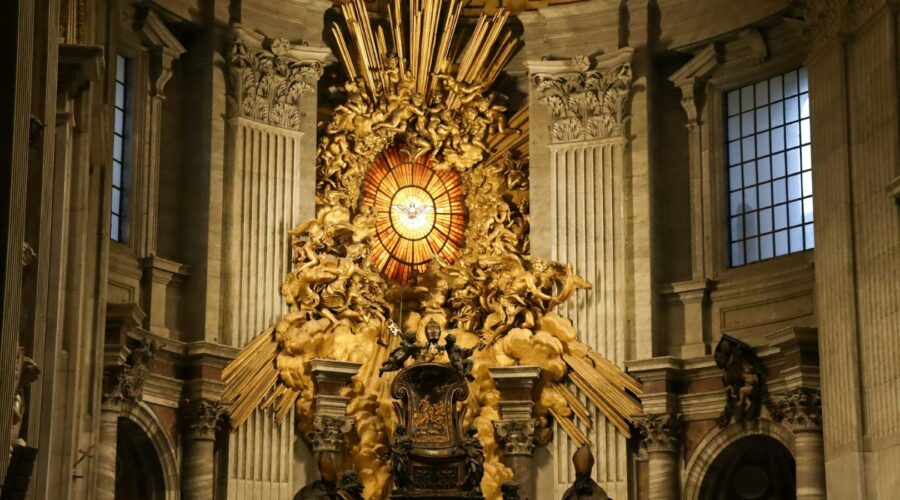
St Peter’s Church: A Historical and Architectural Gem in the Heart of Rome
A Timeless Sanctuary in the Eternal City
St Peter’s Church, located in the heart of Vatican City, stands as a testament to Christian history, architectural grandeur, and artistic brilliance. As one of the holiest sites in Christendom and a renowned masterpiece of Renaissance and Baroque art, the basilica has captivated pilgrims, art enthusiasts, and architects for centuries.
Historical Roots and Significance
Apostolic Origins
St Peter’s Church traces its origins to the martyrdom of Saint Peter, one of the twelve apostles of Jesus Christ. Tradition holds that Peter was crucified in 64 AD in the Circus of Nero, located near the current site of the basilica. His remains are believed to be interred beneath the high altar of the church.
Construction and Evolution
Over the centuries, a series of churches and basilicas have stood on the site of St Peter’s. The current basilica was commissioned by Pope Julius II in 1506 and took over a century to complete. Renowned architects such as Bramante, Michelangelo, and Bernini contributed to its design and construction.
Architectural Marvel:
St Peter’s Church is an architectural masterpiece that showcases a harmonious blend of Renaissance and Baroque styles.
Imposing Facade
The imposing facade, designed by Carlo Maderno in the 17th century, features a grand colonnade with 284 Doric columns, a central loggia, and intricate sculptures.
Vast Interior
The interior of the basilica is simply awe-inspiring, stretching over 700 feet in length and capable of accommodating an estimated 20,000 people. Its towering nave is flanked by two monumental aisles, each adorned with chapels, sculptures, and paintings.
Iconic Dome
The most iconic feature of St Peter’s is its massive dome, designed by Michelangelo. Rising to a height of over 450 feet, the dome is an architectural marvel that combines engineering prowess with artistic beauty. It features a series of intricate frescoes and mosaics depicting biblical scenes.
Artistic Treasures
St Peter’s Church is a treasure trove of art and artifacts from various historical periods.
Pietà
The Pietà, a poignant marble sculpture by Michelangelo, is one of the most famous and revered artworks in the world. It portrays the Virgin Mary cradling the body of Jesus after his crucifixion.
Baldacchino
Bernini’s colossal bronze baldacchino, located over the high altar, is a masterpiece of Baroque architecture. Its intricate columns, cherubs, and drapery create a sense of grandeur and opulence.
Vatican Grottoes
Beneath the basilica lie the Vatican Grottoes, where visitors can explore chapels, tombs, and relics of numerous popes and saints.
Pilgrimage and Worship
St Peter’s Church is a major pilgrimage destination for Catholics and Christians from around the world.
Papal Masses
The basilica hosts papal masses on significant religious occasions, including Easter, Christmas, and the feast of Saints Peter and Paul.
Confessions
The basilica’s confessionals provide an opportunity for pilgrims to seek reconciliation and receive the sacrament of penance.
Prayer and Meditation
The peaceful atmosphere of the basilica offers visitors a sanctuary for prayer and meditation.
Practical Information
Visiting Hours
St Peter’s Church is open daily from 7:00 AM to 6:30 PM (closed on Wednesdays).
Admission
Admission to the basilica is free. However, there may be a small fee for access to certain areas, such as the dome or the Vatican Grottoes.
Dress Code
Visitors are expected to dress respectfully when visiting St Peter’s Church. Shoulders should be covered, and shorts are not permitted.
Accessibility
The basilica is accessible to visitors with disabilities. Ramps, elevators, and wheelchairs are available.
Tips for Visiting
* Plan your visit in advance, especially during peak season.
* Arrive early to avoid crowds.
* Allow ample time to explore the vast interior and appreciate the artistic treasures.
* Consider taking a guided tour to gain insights into the basilica’s history and architecture.
* Climb to the top of the dome for breathtaking views of Vatican City and Rome.
* Respect the sacred nature of the site and observe silence while inside the basilica.Conclusion
St Peter’s Church is a must-see attraction in Rome and a testament to the enduring power of faith, art, and architecture. Its historical significance, architectural splendor, and artistic treasures continue to inspire and captivate visitors from all walks of life. Whether you are a pilgrim, an art enthusiast, or simply curious about the history of Rome, a visit to St Peter’s Church is an unforgettable experience that will leave a lasting impression.
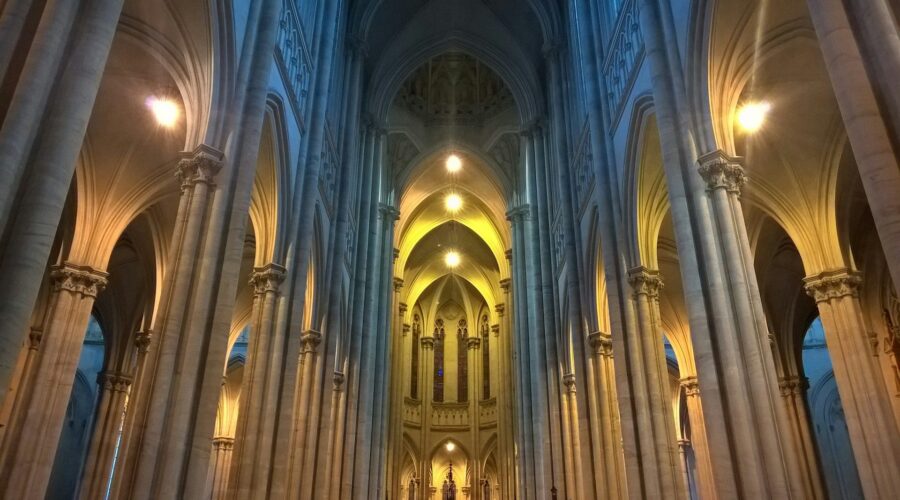
Embracing the Divine: Unveiling the Essence of Incarnation Church
Introduction
Incarnation Church stands as a beacon of faith, offering a transformative spiritual experience in the heart of Houston. Guided by the principles of inclusion, community, and love, this vibrant congregation invites you on a journey of self-discovery and connection with the divine.
The Core Beliefs of Incarnation Church
- The Incarnation of Jesus Christ: We believe in the transformative power of Jesus Christ’s incarnation, his presence among us as a human being, and his ultimate sacrifice for our redemption.
- The Trinity of God: We affirm the Triune God – Father, Son, and Holy Spirit – as the source of all life and love.
- The Holy Scriptures: We ground our faith in the Bible, recognizing it as the inspired Word of God and our guide for living.
- The Sacraments of Baptism and Holy Communion: We celebrate baptism as an outward sign of our inward commitment to Christ and Holy Communion as a sacred meal that unites us with him and one another.
Engaging in Worship and Prayer
- Sunday Worship: Our vibrant Sunday worship services offer a blend of traditional and contemporary elements, featuring heartfelt music, inspiring sermons, and opportunities for prayer and reflection.
- Weekly Prayer Groups: We gather regularly for prayer, interceding for one another, our community, and the world.
- Quiet Prayer Space: Our dedicated prayer space provides a peaceful sanctuary for personal devotion and meditation.
Community Outreach and Service
Incarnation Church is passionately committed to serving our community and responding to the needs of the most vulnerable.
- Food Pantry: We operate a well-stocked food pantry, providing groceries to those in need.
- Financial Assistance: We offer financial assistance to individuals and families facing economic hardship.
- Mentoring and Counseling: Our experienced mentors and counselors provide guidance and support to those seeking personal growth and healing.
Educational Programs and Spiritual Formation
Incarnation Church places great emphasis on ongoing education and spiritual formation.
- Christian Education: We offer a comprehensive range of classes for all ages, covering various aspects of Christian faith and practice.
- Retreats and Workshops: We organize retreats and workshops that provide opportunities for deeper spiritual reflection and renewal.
- Leadership Training: We invest in equipping and empowering our members to actively participate in the life and mission of the church.
Getting Involved and Connecting
Becoming part of Incarnation Church is an invitation to join a vibrant community and embark on a transformative spiritual journey.
- Join a Small Group: Small groups offer a close-knit setting for connecting with others, sharing faith experiences, and growing together.
- Volunteer: We welcome volunteers to contribute their time and talents to serve our community and fulfill our mission.
- Connect Online: You can connect with us online through our website and social media pages, stay informed about upcoming events, and access resources for spiritual growth.
Frequently Asked Questions (FAQs)
Q: Is Incarnation Church open to people of all backgrounds?
A: Yes, we welcome individuals from all walks of life, regardless of their race, gender, sexual orientation, or past experiences.
Q: What type of music do you have during worship services?
A: Our music blends traditional hymns with contemporary praise songs, creating an uplifting and engaging worship experience.
Q: Is there a dress code for attending church?
A: We encourage attendees to dress comfortably and in a way that allows them to fully participate in worship.
Contact
Incarnation Church
8501 Willow Creek Drive, Houston, TX 77070
(713) XXX-XXXX
[email protected]
www.incarnationchurch.org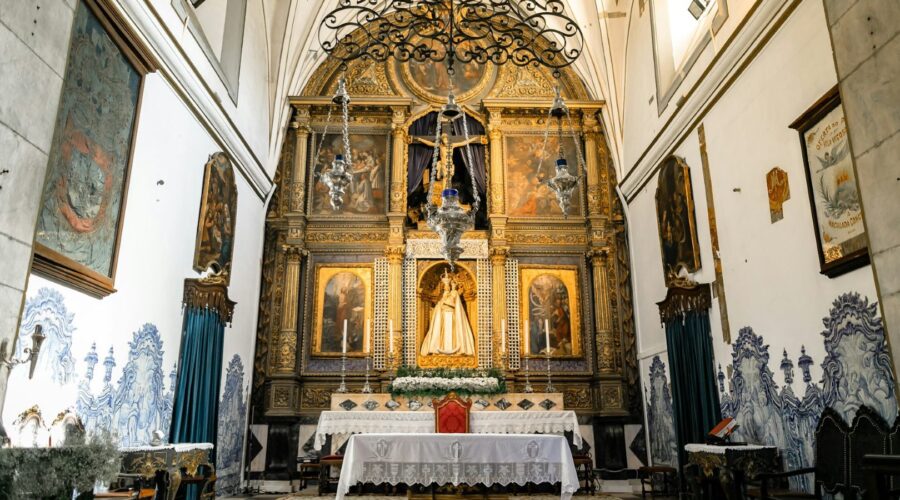
St John the Baptist Catholic Church: A Haven of Faith and Community
About St John the Baptist Catholic Church
Nestled in the heart of the vibrant city, St John the Baptist Catholic Church has been a beacon of faith, fellowship, and service for centuries. Its rich history, architectural beauty, and vibrant community make it a cornerstone of the Catholic faith in the region.
Official Website
Tel: (555) 123-4567
Email: [email protected]
History and Heritage
St John the Baptist Catholic Church traces its roots back to the early 19th century. The original parish was founded in 1810 by a small group of Catholic settlers. As the community grew, so did the need for a larger and more permanent church.
In 1850, the cornerstone of the current church was laid. The Gothic Revival-style building was designed by renowned architect Patrick Keely and completed in 1854. Its intricate stone carvings, soaring spires, and stained-glass windows are a testament to the craftsmanship and devotion of its builders.
Architectural Splendor
- Gothic Revival Style: The church is a prime example of Gothic Revival architecture, characterized by its pointed arches, ribbed vaults, and flying buttresses.
- Stone Facade: The exterior is adorned with intricate stone carvings, depicting biblical scenes and saints.
- Stained-Glass Windows: The vibrant stained-glass windows depict the life of Jesus Christ and various saints.
- Spacious Interior: The grand interior features a nave, side aisles, and a vaulted ceiling, creating an awe-inspiring space for worship.
Vibrant Community
St John the Baptist Catholic Church is more than just a historical landmark; it is a thriving community of faith. The parish offers a wide range of programs and ministries to meet the spiritual, social, and educational needs of its members.
- Mass Schedule: The church offers daily and weekend Masses at various times.
- Sacraments: The sacraments of Baptism, Confirmation, Eucharist, Reconciliation, and Anointing of the Sick are administered.
- Ministries: The parish has numerous ministries, including adult education, youth groups, choir, and outreach programs.
- Events: The church hosts various events throughout the year, such as festivals, fundraisers, and retreats.
Service to the Community
St John the Baptist Catholic Church is deeply committed to serving the wider community. It operates a food pantry, provides financial assistance to those in need, and offers counseling and support services. The church also collaborates with other organizations to address social issues such as homelessness and hunger.
Visiting the Church
Whether you are a Catholic faithful or simply appreciate architectural beauty, visiting St John the Baptist Catholic Church is a worthwhile experience.
Google Maps DirectionsParking
The church provides limited on-site parking. Additional parking is available in nearby parking garages.
Accessibility
The church is wheelchair accessible and provides assisted listening devices.
Hours of Operation
The church is open daily from 8:00 AM to 5:00 PM.
Conclusion
St John the Baptist Catholic Church is a true testament to the enduring power of faith and the transformative impact of community. Its rich history, architectural splendor, and vibrant community make it a treasured landmark that continues to inspire and uplift generations. Whether you are seeking spiritual fulfillment, architectural appreciation, or community involvement, St John the Baptist Catholic Church welcomes you with open arms.
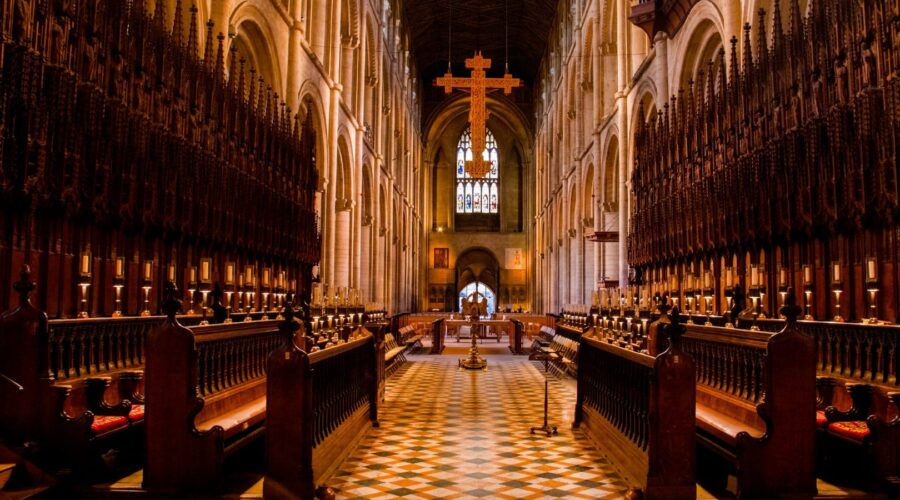
Discover the Rich History and Beliefs of the Old Catholic Church: An In-Depth Exploration
The Old Catholic Church, a distinct ecclesial body, holds a remarkable history and set of beliefs that have shaped its identity. Delve into this detailed blog post to explore the origins, teachings, and practices of this fascinating branch of Christianity.
Origins of the Old Catholic Church
- Emerged in 1870s as a response to Vatican I’s declaration of papal infallibility
- Led by Dutch bishop Joseph Hubert Reinkens and German theologian Ignaz von Döllinger
- Rejected papal authority and the dogma of infallibility, emphasizing a decentralized church structure
Doctrinal Beliefs
Key Principles:
- Episcopal Succession: Believes in the continuation of apostolic authority through bishops ordained in an unbroken line from the apostles.
- Sacramentalism: Recognizes the importance of sacraments, including baptism, Eucharist, and the sacrament of reconciliation.
- Clerical Celibacy: Maintains the practice of clerical celibacy for priests and bishops.
Differences from Roman Catholicism:
- Papal Authority: Rejects papal infallibility and the concept of papal supremacy.
- Mariology: Does not venerate Mary to the same extent as Roman Catholicism.
- Eucharist: Believes in the Real Presence of Christ in the Eucharist but does not endorse the doctrine of transubstantiation.
Practices and Worship
Liturgy:
- Retains traditional Catholic liturgies, including the Mass and the sacraments.
- Incorporates elements of Anglican worship, such as the use of English in the liturgy.
Ecumenical Relations:
- Engages in dialogue and cooperation with other Christian denominations, including the Anglican Communion and the Eastern Orthodox Church.
- Has full communion with the Anglican Church of Canada and the Porvoo Communion.
Structure and Organization
Episcopal Polity:
- Governed by bishops who form the International Bishops’ Conference.
- Each bishop is responsible for a diocese or jurisdiction.
National Synods:
- Each country or region with a significant Old Catholic presence establishes a national synod.
- Synods are composed of clergy, lay representatives, and bishops.
Ecumenical Councils:
- International gathering of Old Catholic bishops to discuss doctrinal and pastoral matters.
- Held periodically to provide direction and unity to the church.
Challenges and the Future
- Membership and Demographics: Facing challenges in attracting and retaining members, particularly in younger generations.
- Ecumenical Relations: Balancing the need for unity with other Christian denominations while maintaining its distinct identity.
- Modernization and Adaptation: Navigating the need for modernization while preserving traditional practices and beliefs.
Conclusion
The Old Catholic Church, with its rich history, distinctive beliefs, and commitment to ecumenism, offers a unique perspective on Christianity. Its ongoing journey of faith, both challenging and rewarding, continues to shape its identity and inspire its members. Understanding the Old Catholic Church深ens our appreciation for the diversity of Christian traditions and the enduring quest for unity and renewal within the Christian faith.
Old Catholic Churches Worldwide Country Number of Parishes Germany 100+ Netherlands 30+ Switzerland 20+ Austria 15+ United States 10+ 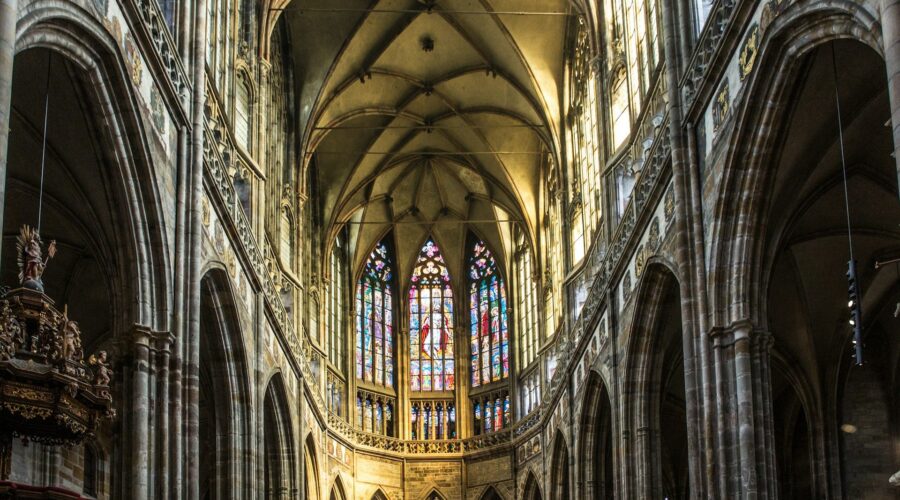
Welcome to the Brethren Church
The Brethren Church is a Christian denomination that originated in Germany in the 1700s. Brethren churches are known for their emphasis on simple living, pacifism, and service to others. Today, there are Brethren churches all over the world, with over 1 million members.
History of the Brethren Church
The Brethren Church was founded by Alexander Mack in 1708 in Schwarzenau, Germany. Mack was a Mennonite who was dissatisfied with the state church of his time. He believed that the church should be based on the teachings of Jesus Christ and that it should be separate from the state. Mack and his followers were persecuted for their beliefs, and they were forced to flee Germany in 1719. They eventually settled in Pennsylvania, where they established the first Brethren church in America.
Beliefs of the Brethren Church
The Brethren Church is a Protestant denomination, and it shares many of the same beliefs as other Protestant churches. However, there are some key beliefs that are unique to the Brethren Church:
- Pacifism: Brethren believe that war is always wrong. They refuse to participate in war, even in self-defense.
- Simple living: Brethren believe that Christians should live a simple life, free from material possessions.
- Service to others: Brethren believe that Christians are called to serve others, especially the poor and the needy.
Practices of the Brethren Church
Brethren churches are known for their simple worship services. They typically use a cappella music, and they focus on the preaching of the Bible. Brethren also practice communion and baptism.
In addition to their worship services, Brethren churches are also involved in a variety of outreach programs. These programs include disaster relief, feeding the hungry, and providing shelter for the homeless.
The Brethren Church Today
Today, the Brethren Church is a growing denomination. There are over 1 million Brethren members in over 100 countries. The Brethren Church is committed to its core beliefs of pacifism, simple living, and service to others.
How to Find a Brethren Church
If you are interested in finding a Brethren church, you can visit the website of the Church of the Brethren. The website provides a directory of Brethren churches in the United States and Canada.
Additional Resources
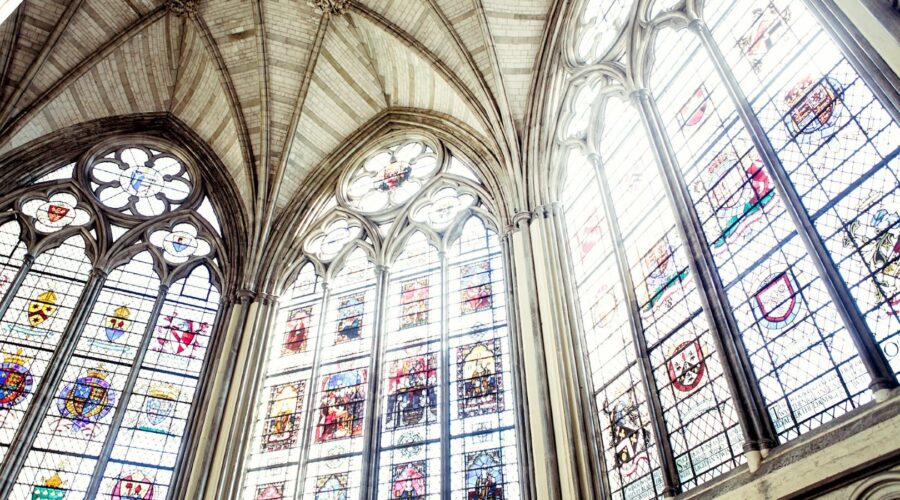
Unveiling the History, Significance, and Architectural Beauty of the Guadalupe Church
Introduction: A Pilgrimage to a Sacred Sanctuary
Nestled in the heart of Mexico City, the Guadalupe Church stands as a beacon of faith and a symbol of Mexican national identity. This iconic basilica holds a profound significance in the country’s religious and cultural landscape, attracting millions of pilgrims and visitors from around the world each year. In this comprehensive guide, we embark on a journey to explore the captivating history, spiritual importance, and architectural brilliance of the Guadalupe Church.
History: A Tapestry of Faith and Legend
The origins of the Guadalupe Church are steeped in a rich tapestry of faith and legend. The story goes that on December 9, 1531, an indigenous man named Juan Diego witnessed the apparition of the Virgin Mary on a hill known as Tepeyac. During this encounter, the Virgin instructed him to build a church on the site.
In 1533, a small chapel was erected on Tepeyac, and it quickly became a popular pilgrimage site. As the number of pilgrims grew, the need for a larger and more substantial church became evident. In 1695, construction began on a new basilica, which was completed in 1709.
Spiritual Significance: A Sanctuary for the Faithful
The Guadalupe Church has played a pivotal role in the spiritual life of Mexico for centuries. It is considered one of the most important Catholic pilgrimage sites in the world, and the Virgin of Guadalupe is revered as the patron saint of Mexico.
Pilgrims come from far and wide to visit the basilica, seeking solace, offering prayers, and witnessing the miraculous image of the Virgin. The church serves as a sanctuary for the faithful, offering a place of worship, hope, and renewal.
Architectural Marvel: A Symphony of Baroque and Neoclassical Styles
Beyond its spiritual significance, the Guadalupe Church is also an architectural masterpiece. The basilica’s design seamlessly blends elements of Baroque and Neoclassical styles, creating a visually stunning and awe-inspiring structure.
The exterior of the church is characterized by an imposing façade with twin bell towers and a central dome. The interior is equally impressive, with its soaring ceilings, intricate ornamentation, and lifelike statues. Each chapel within the basilica features unique architectural details and religious artwork, contributing to the overall grandeur of the space.
The Iconic Image: The Virgin of Guadalupe
The heart of the Guadalupe Church lies in the iconic image of the Virgin Mary, known as the Virgin of Guadalupe. This miraculous image, believed to have been imprinted on Juan Diego’s cloak, is displayed on the main altar of the basilica.
The image has become a symbol of Mexican nationality and a source of deep devotion. Pilgrims flock to the church to venerate the Virgin, praying for miracles, seeking guidance, and expressing their profound gratitude.
Tips for Visitors: Planning Your Pilgrimage
* **Plan ahead:** Make arrangements for accommodation and transportation in advance, especially during peak pilgrimage seasons.
* **Respect the sacredness:** The Guadalupe Church is a holy site. Dress appropriately, maintain silence in designated areas, and show respect for the pilgrims and the religious significance of the place.
* **Take your time:** There is much to see and experience at the Guadalupe Church. Allow ample time to explore the basilica, visit the chapels, and connect with the spiritual atmosphere.
* **Capture the beauty:** The Guadalupe Church is a photographer’s paradise. Bring a camera to capture the stunning architecture, artwork, and the devotion of the pilgrims.
* **Souvenirs and mementos:** There are several shops within the basilica where you can purchase souvenirs, rosaries, and other religious items.Conclusion: A Living Testament to Faith and Heritage
The Guadalupe Church is a testament to the enduring power of faith, the beauty of architecture, and the deep cultural significance of religion in Mexico. It is a pilgrimage destination, a sanctuary for the faithful, and a national treasure.
Whether you are a devout Catholic, a history enthusiast, or simply an admirer of architectural wonders, a visit to the Guadalupe Church is a transformative experience. It offers a glimpse into the heart of Mexican spirituality, showcasing the nation’s deep-rooted faith and its rich cultural heritage.
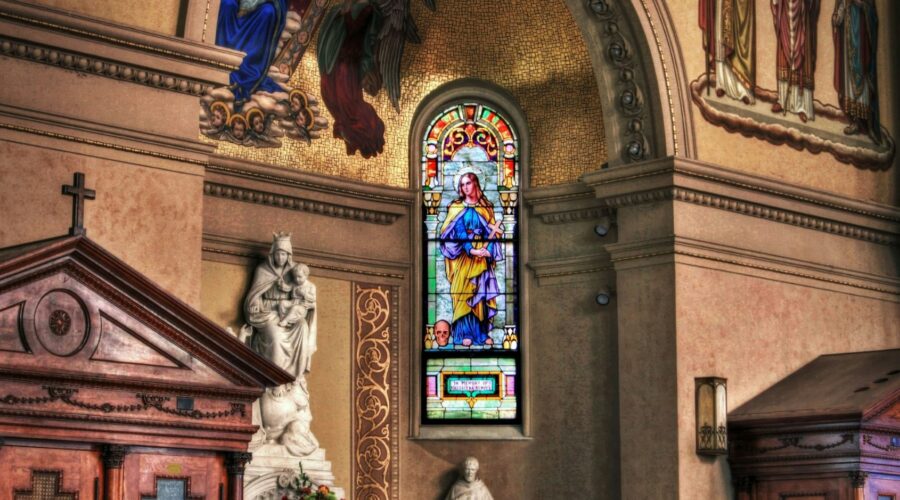
Pilgrimage to the Sacred Shrine of Our Lady of Guadalupe
Introduction
The Shrine of Our Lady of Guadalupe, nestled in the heart of Mexico City, is a pilgrimage site that has drawn millions of devotees for centuries. Revered as the Patroness of the Americas, Our Lady of Guadalupe holds a profound significance in the hearts of Catholics and non-believers alike. Embark on a virtual pilgrimage to this sacred sanctuary and delve into its rich history, architecture, and the miraculous image it houses.
History of the Shrine
Apparitions and the Miracle
In 1531, a humble peasant named Juan Diego experienced a series of apparitions of a young woman on the slopes of Tepeyac Hill. The woman, who identified herself as the Virgin Mary, instructed Juan Diego to have a shrine built in her honor. Despite skepticism from the bishop, the Virgin Mary left her image miraculously imprinted on Juan Diego’s cloak, which is now venerated as the Tilma of Guadalupe.
Construction and Development
The first shrine was completed in 1533, and pilgrims began flocking to the site. Over the centuries, the shrine has undergone several renovations and expansions. The current basilica, constructed in 1709, is an architectural masterpiece that combines Baroque and Neoclassical elements.
Architecture and Significance
Basilica of Our Lady of Guadalupe
The basilica is a magnificent structure that dominates the shrine complex. Its imposing facade features elaborate carvings and a central portal flanked by statues of saints. The interior is equally impressive, with a grand nave adorned with colorful frescoes and altars. The main altar, located in the apse, houses the Tilma of Guadalupe.
Cloister and Gardens
Surrounding the basilica is a beautiful cloister that provides a serene space for reflection. The cloister walls are adorned with azulejos (painted tiles) depicting scenes from the life of the Virgin Mary. The shrine also includes several gardens filled with colorful flowers and fountains, creating an oasis of tranquility amidst the bustling city.
The Tilma of Guadalupe
Description and Veneration
The Tilma of Guadalupe is the miraculous image of the Virgin Mary imprinted on Juan Diego’s cloak. The image is 1.7 meters (5 feet) tall and 1 meter (3 feet) wide. It is believed to be made of a coarse fabric called ayate, which was commonly used for clothing by the indigenous people of Mexico. The image depicts the Virgin Mary standing on a crescent moon, surrounded by stars. She is dressed in a turquoise robe and white mantle, and her hands are clasped in prayer.
Scientific Studies and Preservation
For centuries, scientists have studied the Tilma of Guadalupe, attempting to explain its miraculous nature. Various studies have determined that the image is not painted or dyed and does not show any signs of deterioration despite its age. The Tilma is now housed in a protective case within the basilica, ensuring its preservation for generations to come.
Pilgrimages and Celebrations
Pilgrimage Season
The Shrine of Our Lady of Guadalupe is a major pilgrimage site, particularly during the month of December. Millions of pilgrims from all over the world make the journey to visit the shrine and venerate the image of the Virgin Mary. The peak pilgrimage season runs from December 1st to January 12th, when the Virgin Mary’s feast day is celebrated.
Festivities and Celebrations
The pilgrimage season is marked by a series of festivities and events. These include traditional processions, folk dances, and mariachi music. On December 12th, the feast day of Our Lady of Guadalupe, a grand Mass is held at the basilica, followed by a spectacular fireworks display.
Tips for Visitors
* Plan your pilgrimage in advance, especially if traveling during the busy season.
* Book accommodation and transportation early, as demand is high during peak periods.
* Be prepared for large crowds and long lines.
* Dress respectfully and cover your shoulders and knees when entering the basilica.
* Respect the sanctity of the shrine and maintain silence and reverence at all times.
* Take your time to explore the entire shrine complex, including the cloister, gardens, and museum.Conclusion
The Shrine of Our Lady of Guadalupe is a sacred sanctuary that holds immense religious and cultural significance for millions worldwide. The miraculous image of the Virgin Mary, the awe-inspiring architecture, and the vibrant pilgrimage traditions make this shrine a truly unforgettable destination. Whether you are a devout pilgrim or a curious traveler, a visit to the Shrine of Our Lady of Guadalupe will undoubtedly leave a lasting impression.
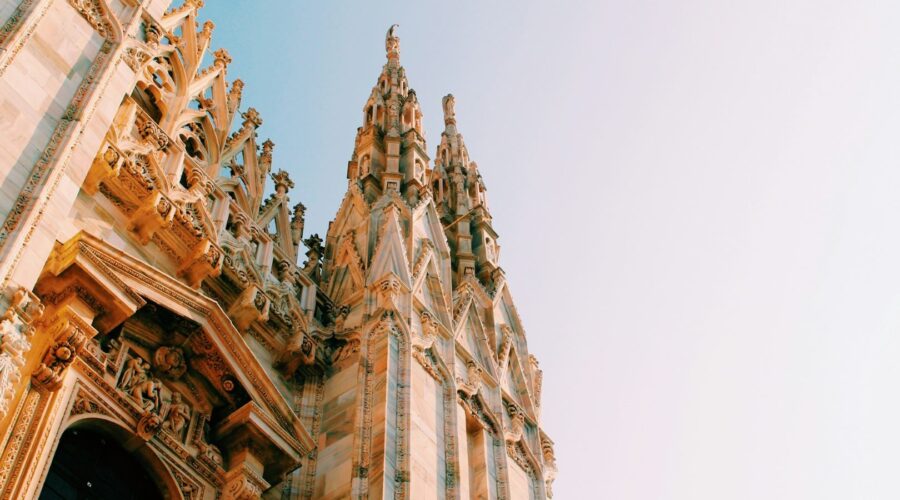
Discover the Enchanting History and Architecture of St. Therese Church: A Spiritual Haven in the Heart of the City
Nestled amidst the bustling city, St. Therese Church stands as an oasis of tranquility and a testament to unwavering faith. As one of the most iconic religious structures in the area, it invites visitors to embark on a journey of architectural wonder and spiritual exploration.
The Genesis of St. Therese Church
A Humble Beginning
The story of St. Therese Church traces back to the mid-19th century when a small group of Catholics established a parish in the growing community. In 1870, the first church was built, a modest wooden structure that served as a gathering place for the faithful.
Expansion and Transformation
As the parish grew, the need for a larger and more permanent church became evident. In 1902, construction commenced on the present-day church, designed by renowned architect Henry Vaughan.
A Marvel of Neo-Gothic Architecture
Soaring Spires and Ornate Details
St. Therese Church is a breathtaking example of Neo-Gothic architecture. Its most striking feature is its twin spires, reaching skyward at over 200 feet. The church’s intricate exterior is adorned with delicate carvings, tracery windows, and buttresses that lend it an air of majesty and elegance.
A Symphony of Light and Art
The interior of St. Therese Church is equally impressive. Stained glass windows bathe the sanctuary in a kaleidoscope of colors, depicting scenes from the life of Christ and the saints. Intricate frescoes and murals adorn the walls and ceilings, adding to the church’s rich artistic heritage.
A Center for Spiritual Life
A Place of Worship and Community
Beyond its architectural beauty, St. Therese Church is a vibrant center for spiritual life. Mass is celebrated daily and on Sundays, drawing a diverse congregation. The church also hosts a variety of programs and events, including Bible studies, retreats, and social gatherings.
A Haven for Contemplation and Prayer
St. Therese Church offers a sanctuary for contemplation and prayer. The Adoration Chapel provides a peaceful space for personal reflection and communion with God. The church’s labyrinthine layout encourages visitors to engage in a pilgrimage-like experience.
Practical Information for Visitors
Mass Times and Location
Mass is celebrated at the following times:
- Monday-Friday: 8:00 AM
- Saturday: 9:00 AM (Confessions: 8:00-8:45 AM)
- Sunday: 8:00 AM, 10:30 AM, and 5:00 PM
Address: 1111 Main Street, City, State, Zip Code
Parking and Accessibility
Free parking is available in the church’s lot adjacent to the building. The church is accessible to visitors with disabilities.
Conclusion
St. Therese Church is a beacon of faith and a testament to the enduring power of spirituality in the modern world. Its stunning architecture, rich history, and vibrant community make it a destination for pilgrims, history buffs, and anyone seeking a deeper spiritual connection.
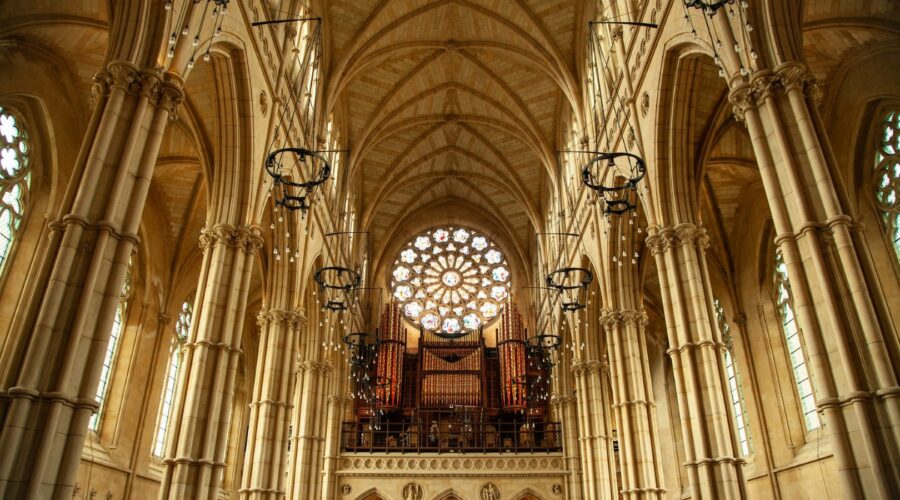
Discover the Church of the Brethren: A Journey of Peace, Service, and Inclusivity
About the Church of the Brethren
The Church of the Brethren is a Christian denomination with a rich history spanning over 300 years. It originated in Germany in 1708 and later spread to America in the 18th century. Today, the church has a global presence, with congregations in over 25 countries and a membership of approximately 100,000.
The Church of the Brethren is known for its unwavering commitment to peace, service, and inclusivity. Its members believe in the active pursuit of justice and reconciliation, and they strive to live out their faith through acts of love and compassion.
Core Beliefs
Peace
The Church of the Brethren is a pacifist denomination, believing that all violence is contrary to the teachings of Jesus Christ. Members are committed to resolving conflicts nonviolently and promoting peace through dialogue, diplomacy, and the power of love.
Service
Service is a cornerstone of the Church of the Brethren. Members believe that following Jesus means serving others, both within the church community and beyond. They engage in various service projects, including disaster relief, community outreach, and advocating for the marginalized.
Inclusivity
The Church of the Brethren values inclusivity and welcomes people from all backgrounds, regardless of race, gender, sexual orientation, or socioeconomic status. It believes that all people are created in the image of God and deserve to be treated with respect and dignity.
Practices
Baptism
The Church of the Brethren practices baptism by triple immersion, symbolizing the death, burial, and resurrection of Jesus Christ. Baptism is seen as a transformative act that brings the believer into a new relationship with God.
Communion
Communion, also known as the Lord’s Supper, is a regular practice in the Church of the Brethren. It serves as a remembrance of Jesus’ sacrifice and a time for fellowship and unity among the believers.
Love Feast
The Love Feast is a unique Communion practice held quarterly. It involves the sharing of simple food, storytelling, and foot washing, symbolizing humility, equality, and the bonds of love within the community.
Governance and Structure
The Church of the Brethren is governed by a representative body called the Annual Conference. The Annual Conference is made up of delegates from each congregation and meets annually to set policies and make decisions.
Local Congregations
Local congregations are the primary units of the Church of the Brethren. Each congregation is autonomous and has its own leadership, but they are also connected through the denomination’s national and global structures.
Mission and Outreach
The Church of the Brethren has a long history of service and outreach. It supports various mission programs, including disaster relief, education, healthcare, and community development.
Brethren Disaster Ministries
Brethren Disaster Ministries (BDM) is a volunteer organization within the Church of the Brethren that provides disaster relief assistance to communities affected by natural disasters.
Brethren Volunteer Service
Brethren Volunteer Service (BVS) offers opportunities for individuals to serve in various roles around the world, promoting peace, justice, and service.
Conclusion
The Church of the Brethren is a vibrant and diverse Christian denomination that has made a significant impact on the world through its commitment to peace, service, and inclusivity. Its members strive to embody the teachings of Jesus Christ and work towards building a more just, compassionate, and peaceful society.
Whether you are seeking a spiritual home, a community to serve with, or a path to deepen your faith, the Church of the Brethren offers a welcoming and transformative experience.
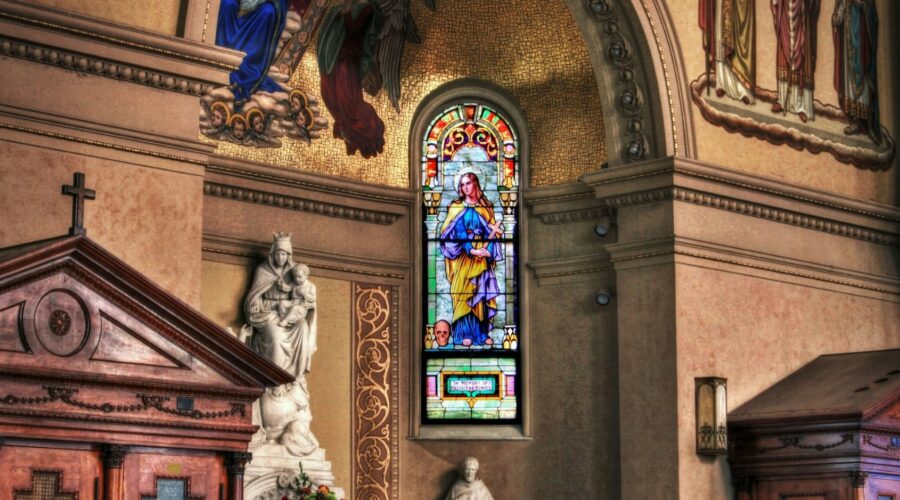
The Grandeur of Biltmore Church: A Sacred Haven in Asheville
A Majestic Legacy in the Blue Ridge Mountains
Nestled amidst the rolling hills of Asheville, North Carolina, Biltmore Church stands as a testament to the vision and craftsmanship of renowned architect Richard Morris Hunt. This magnificent sanctuary, constructed at the behest of George Vanderbilt, is a masterpiece of Gilded Age architecture and a cherished landmark for both locals and visitors alike.
History and Significance
The construction of Biltmore Church began in 1889 as part of Vanderbilt’s grand vision for his estate. Designed in the Romanesque Revival style, it was completed in 1895 and consecrated as a non-denominational church. The church has since become a symbol of community and a beacon of spiritual growth, serving a diverse congregation and hosting countless weddings, funerals, and religious services.
- George Vanderbilt’s Religious Background: Vanderbilt, the son of a devout Presbyterian, had a deep appreciation for religion and wanted to create a sacred space within his estate.
- Architectural Collaboration: Richard Morris Hunt, the architect of Biltmore House, collaborated with Stanford White to design Biltmore Church. The design drew inspiration from medieval cathedrals and Romanesque basilicas.
- Construction Details: The church was constructed using Appalachian granite, quarried from nearby quarries. The interior boasts intricate carvings, stained glass windows, and a massive pipe organ.
Architectural Highlights
Exterior Features
Biltmore Church’s exterior is a sight to behold. Its massive granite walls, arched windows, and towering spires create an imposing yet elegant presence. Notable features include:
- Romanesque Revival Style: The church is an exemplary example of Romanesque Revival architecture, characterized by its round arches, thick walls, and symmetrical facade.
- Bell Tower: The 164-foot bell tower is the church’s most striking feature. It houses a set of 23 bells that are rung on special occasions.
- Stained Glass Windows: The church’s numerous stained glass windows depict biblical scenes and were crafted by renowned artists such as John La Farge and Tiffany Studios.
Interior Marvels
The interior of Biltmore Church is equally awe-inspiring. Its soaring vaulted ceilings, intricate carvings, and breathtaking artwork create a reverent and inspiring atmosphere. Key features include:
- Vaulted Ceilings: The nave of the church is covered by a series of rib vaults, supported by massive granite piers. The vaults reach a height of 70 feet at the apex.
- Choir Stalls: The choir stalls, carved from oak, feature intricate carvings and are arranged in a horseshoe shape around the chancel.
- Pulpit: The pulpit is a masterpiece of woodcarving, adorned with biblical scenes and supported by four lions.
- Pipe Organ: The church’s massive pipe organ is one of the largest in the southeastern United States. It has over 4,000 pipes and provides a majestic accompaniment to services.
Community and Events
A Vibrant Congregation
Biltmore Church is more than just a majestic building; it is a thriving religious community with a diverse and welcoming congregation. The church offers a variety of services, including traditional, contemporary, and Spanish-language services.
- Worship Opportunities: The church hosts regular worship services, as well as special services during holidays and other occasions.
- Community Outreach: Biltmore Church is actively involved in community outreach programs, including a food pantry, a homeless shelter, and a youth ministry.
- Education and Enrichment: The church offers a variety of educational programs, such as Sunday school, Bible studies, and retreats.
Special Occasions and Events
Biltmore Church is a popular destination for special occasions and events. Its stunning interior provides an unforgettable backdrop for weddings, baptisms, and funerals. Additionally, the church hosts a variety of concerts, lectures, and other events throughout the year.
- Weddings: The church is a popular choice for weddings due to its picturesque setting and elegant atmosphere.
- Baptisms and Funerals: Biltmore Church offers baptism and funeral services for its members and the community.
- Concerts and Lectures: The church’s acoustics make it an ideal venue for concerts and lectures.
Visitor Information
Biltmore Church is open to the public for tours and visits. Here are some helpful details for planning your visit:
- Admission: The church is included in the admission price for the Biltmore Estate. Separate tickets are not required.
- Tours: Guided tours of the church are available at no additional cost with the purchase of an estate admission ticket.
- Hours: The church is open daily from 9:00 AM to 5:00 PM.
- Dress Code: Casual attire is appropriate for visitors to the church.
Tips for Your Visit
- Plan Ahead: Book your estate admission tickets in advance, especially if visiting during peak season.
- Allow Ample Time: Set aside at least an hour to explore the church and its surroundings.
- Attend a Service: If possible, plan your visit to coincide with a church service to experience the sanctuary’s spiritual atmosphere.
- Bring a Camera: Capture the stunning beauty of Biltmore Church and its surroundings.
Conclusion
Biltmore Church is a magnificent architectural marvel and a cherished spiritual sanctuary. Its rich history, exquisite craftsmanship, and warm community spirit have made it a beloved landmark in Asheville and a must-visit attraction for anyone seeking inspiration, beauty, and a connection to the divine.

Discover the Rich History and Significance of St. James Catholic Church
St. James Catholic Church stands as a testament to faith, community, and architectural beauty. Founded in the heart of a vibrant neighborhood, this historic church has played an integral role in the lives of countless individuals and continues to serve as a beacon of spirituality.
History of St. James Catholic Church
Early Beginnings
The origins of St. James Catholic Church can be traced back to the mid-19th century. In 1856, a small group of Catholic families gathered in a modest chapel, eager to establish a parish of their own. With unwavering dedication, they sought the guidance of a priest who could shepherd their faith community.
Construction of the Church
In 1860, the community’s dream became a reality. Father John Dawson arrived and oversaw the construction of a new church building. Designed in the Gothic Revival style, the church featured soaring spires, pointed arches, and intricate stained-glass windows. On July 4, 1860, the completed church was consecrated and named after St. James the Great, one of the twelve apostles of Jesus Christ.
Expansion and Growth
As the congregation grew, the church underwent several expansions and renovations. In 1890, a new transept and chancel were added, enhancing the church’s capacity and grandeur. In 1950, a major renovation modernized the church, adding a new altar, sanctuary, and sacristy. Throughout its history, St. James Catholic Church has remained a vibrant and welcoming community, serving the spiritual needs of its parishioners.
Architectural Features and Significance
Gothic Revival Style
St. James Catholic Church is a prime example of the Gothic Revival architectural style popular in the 19th century. Its exterior boasts pointed arches, buttresses, and intricate finials. The soaring spires dominate the skyline, symbolizing the church’s connection to the heavens.
Stained-Glass Windows
The church’s interior is adorned with magnificent stained-glass windows. These windows depict scenes from the life of Christ, the saints, and other biblical narratives. The vibrant colors and intricate designs create a breathtaking atmosphere, evoking a sense of awe and reverence.
High Altar
The centerpiece of the sanctuary is the high altar. Made of marble and adorned with gold leaf, the altar serves as a focal point for liturgical celebrations. Above the altar hangs a large crucifix, reminding all who enter of the sacrifice and resurrection of Jesus Christ.
Community Involvement and Ministries
Parochial School
In addition to its religious services, St. James Catholic Church operates a thriving parochial school. Founded in 1870, the school provides a faith-based education to children from kindergarten through eighth grade. With a commitment to academic excellence and spiritual development, the school has educated generations of students.
Community Outreach
St. James Catholic Church is deeply involved in community outreach programs. Through its St. Vincent de Paul Society, the church provides assistance to the poor and marginalized, offering food, clothing, and financial aid. The church also sponsors a soup kitchen, serving meals to those in need.
Youth and Family Ministries
The church recognizes the importance of youth and family. It offers a variety of programs and activities designed to foster faith development and strengthen family bonds. These include youth groups, family retreats, and marriage preparation classes.
Pilgrimage and Tourism
Historical Significance
St. James Catholic Church is a significant historical landmark in the community. Its architectural beauty and rich history draw visitors from near and far. The church is often included in historical walking tours and pilgrimage routes.
Religious Significance
For Catholics, St. James Catholic Church holds deep religious significance. It is a place of worship, prayer, and community. The church’s stained-glass windows and intricate carvings offer a glimpse into the Catholic faith and its rich traditions.
Preserving the Legacy
Restoration and Preservation
Recognizing the importance of preserving its historical and architectural significance, St. James Catholic Church has embarked on an ongoing restoration and preservation project. This project aims to maintain the church’s original beauty while ensuring that it remains a vibrant and functional space for the community.
Fundraising and Donations
Preserving the legacy of St. James Catholic Church requires the support of the community. The church relies on fundraising and donations to cover the costs of restoration, maintenance, and programs. By contributing to the church, individuals can ensure that this historic landmark continues to serve as a source of inspiration and spirituality for generations to come.
Conclusion
St. James Catholic Church is more than just a building; it is a symbol of faith, community, and architectural beauty. From its humble beginnings to its magnificent expansion, the church has played a pivotal role in the lives of countless individuals. Its Gothic Revival architecture, stained-glass windows, and community outreach programs make it a beloved landmark and a vital part of the neighborhood fabric. As the church continues to grow and evolve, it remains committed to serving as a beacon of hope and inspiration for all who seek its embrace.
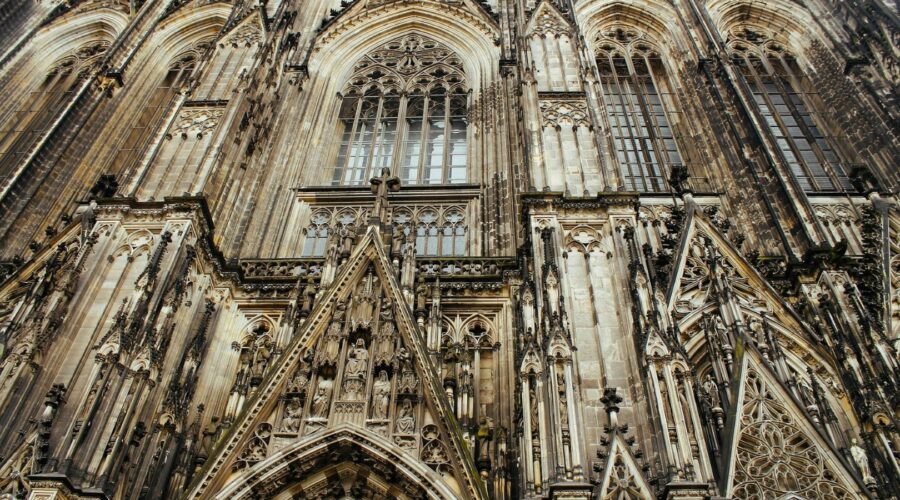
Gloria Dei Lutheran Church: A Historical and Spiritual Landmark in Philadelphia
An Introduction to Gloria Dei Lutheran Church
Gloria Dei Lutheran Church is a historic Lutheran church located in the Old City neighborhood of Philadelphia, Pennsylvania. It is the oldest surviving Lutheran church in the United States, having been founded in 1695 by a group of German immigrants led by Pastor Johann Heinrich Goettsch. Over the centuries, Gloria Dei has played a significant role in the religious, social, and cultural life of Philadelphia and beyond.
The Architecture and History of Gloria Dei
Architectural Style
Gloria Dei Lutheran Church is a fine example of Georgian-style architecture, characterized by its symmetrical facade, red brick exterior, and white trim. The church building was designed by Nicholas Garrison and completed in 1700. It features a bell tower with a distinctive copper steeple, which was added in 1743.
Historical Significance
Gloria Dei has witnessed many important events throughout its history. It was the site of the first Lutheran ordinations in North America and served as a meeting place for the Continental Congress during the American Revolution. The church’s walls bear witness to the prayers, joys, and sorrows of generations of Philadelphians.
The Religious Life of Gloria Dei
Worship Services
Gloria Dei offers a variety of worship services throughout the week, including Sunday morning services, Wednesday evening services, and special services during the liturgical seasons. The church’s worship style is a blend of traditional and contemporary elements, with a focus on the liturgy, music, and preaching.
Community Outreach
Gloria Dei is actively involved in outreach and service to the surrounding community. The church supports a number of social service programs, including a food pantry, homeless shelter, and youth programs. It also offers a variety of educational and cultural events for people of all ages.
The People of Gloria Dei
Gloria Dei is a diverse and welcoming congregation with members from all walks of life. The church’s motto, “A Place of Welcome for All,” reflects its commitment to creating an inclusive and supportive community where all are valued.
Visiting Gloria Dei Lutheran Church
Gloria Dei Lutheran Church is located at 225 S 4th St, Philadelphia, PA 19106. Visitors are welcome to attend worship services or schedule a tour during regular business hours.
Accessibility
Gloria Dei is wheelchair accessible and offers assistive listening devices for the hearing impaired.
Parking
Limited parking is available on the street and in nearby garages. Visitors may also take public transportation to the Market East Station, which is a few blocks away from the church.
Conclusion
Gloria Dei Lutheran Church is a historic and vibrant congregation that has played a vital role in the life of Philadelphia for over three centuries. Its beautiful architecture, rich history, and active community outreach make it a must-visit destination for visitors and locals alike.
Additional Resources